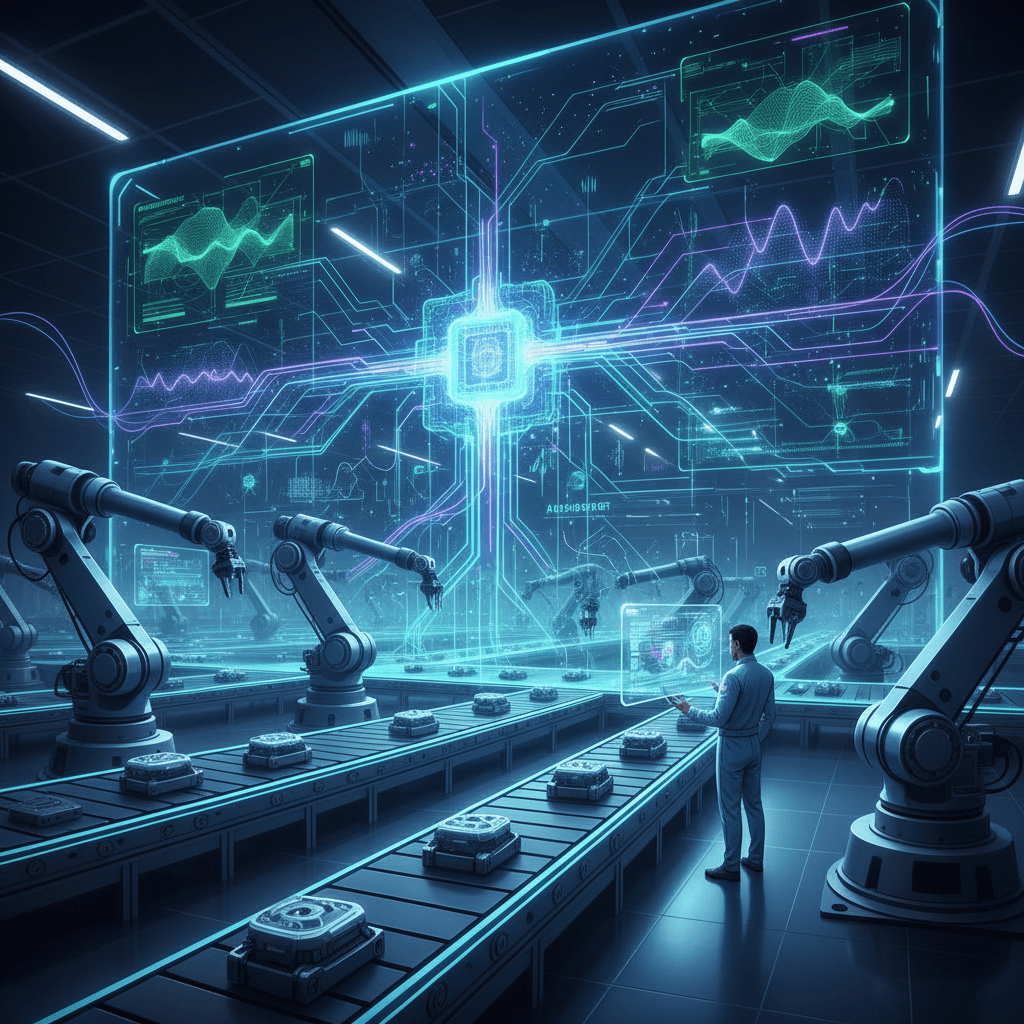Accenture's Physical AI Orchestrator Powers Software-Defined Factories
Accenture's Physical AI Orchestrator acts as the central brain, leveraging digital twins and AI for agile, software-defined factories.
October 29, 2025

In a significant move to accelerate the digitization of the factory floor, Accenture has launched the "Physical AI Orchestrator," a cloud-based solution designed to help manufacturers transform their facilities into highly agile, software-defined operations. The new platform, unveiled at the NVIDIA GTC conference in Washington, D.C., integrates powerful technologies from NVIDIA with Accenture's own artificial intelligence capabilities to create dynamic, real-time virtual replicas of physical plants and warehouses.[1][2][3] This innovation promises to act as a central brain for physical spaces, enabling manufacturers to simulate, predict, and automate factory operations with unprecedented flexibility and efficiency.[1][3] By creating these so-called "software-defined facilities," companies can move beyond the limitations of fixed hardware and adapt their production processes almost instantaneously to changes in demand, supply chain disruptions, or scheduling needs.[2][4]
The core of the Physical AI Orchestrator is its ability to create and maintain live "digital twins"—highly detailed, physically accurate virtual models of a factory's assets, from individual robots and conveyors to entire shop floor layouts.[1][2][5] To achieve this, the solution leverages a powerful combination of technologies. It is built upon NVIDIA Omniverse, a platform for developing and operating 3D internet applications, which provides the foundation for creating these photorealistic and physics-based simulations.[1] This is augmented by NVIDIA Metropolis, a vision AI framework, and AI agents from Accenture's AI Refinery™ platform.[1][2] The process begins with "reality capture," where AI-powered tools convert videos and scans of the physical facility into detailed 3D models.[6] These digital twins are not static; they are continuously updated with live data from the factory floor, creating a mirror world that reflects the real-world operation in real time.[1][2][5] Within this virtual environment, AI agents can then test and simulate the impact of potential process changes, detecting issues and optimizing workflows without disrupting physical operations.[1][2] The insights generated by these simulations are then translated into precise instructions that are fed back to the physical equipment, allowing the facility to adapt intelligently.[1][5]
The practical applications and benefits of this technology are already being demonstrated by several early adopters across various industries.[1][3] For example, Belden, a provider of network and data solutions, collaborated with Accenture to develop a virtual safety fence solution for its factories.[1][5] Using the orchestrator, Belden created safety zones around robots that can automatically stop or reroute the machines if a human worker enters the designated area.[1][2][5] This system uses edge AI to model the movements of workers and equipment with centimeter-level accuracy, enhancing worker safety without halting production.[1][2] In another case, a life sciences company utilized the platform to validate the ideal production conditions for biologics and vaccines.[6] By simulating the entire preservation and drying cycle, the company could test various temperature and pressure profiles much faster than with physical equipment, leading to reduced batch variability and improved product shelf life.[6] Furthermore, a consumer goods manufacturer applied the technology to its warehouse operations, building a digital twin to analyze worker movement and conveyor systems, which resulted in a 20% improvement in throughput and a 15% reduction in capital expenditure by avoiding costly physical redesigns.[6]
The introduction of the Physical AI Orchestrator signals a pivotal shift toward software-defined manufacturing, a concept where the core logic controlling production is decoupled from the underlying hardware.[4] This approach replaces fixed-function industrial appliances with flexible, centrally managed software systems.[7][8] The implications for the manufacturing sector are profound. Such flexibility allows companies to respond to market changes with greater speed, retooling production lines through software updates rather than physical modifications.[4] This agility is crucial in an era of volatile supply chains and rapidly changing consumer demands.[4] By enabling a unified view of the entire production floor, platforms like the orchestrator allow for the continuous optimization of processes, leading to reduced downtime, improved quality, and lower operating costs.[6][4] As Prasad Satyavolu of Accenture's Industry X service described it, the orchestrator is "designed to make agentic AI and physical AI part of the fabric of manufacturing," which is particularly relevant for the reindustrialization efforts in regions like the United States.[1]
In conclusion, Accenture's Physical AI Orchestrator represents a sophisticated convergence of digital twin simulation, artificial intelligence, and cloud computing aimed at reinventing the modern factory. By enabling the creation of software-defined facilities, the solution offers manufacturers a powerful tool to enhance operational intelligence, improve safety, and unlock new levels of productivity and adaptability. The collaboration with NVIDIA provides the robust technological backbone necessary to simulate complex industrial environments with high fidelity. As early success stories from companies like Belden demonstrate, the ability to test, optimize, and control physical operations through a virtual counterpart is not a distant concept but a present-day reality with measurable benefits. This platform stands as a key enabler for the factory of the future, where industrial processes are not just automated, but are also intelligent, self-optimizing, and seamlessly integrated with the digital world.